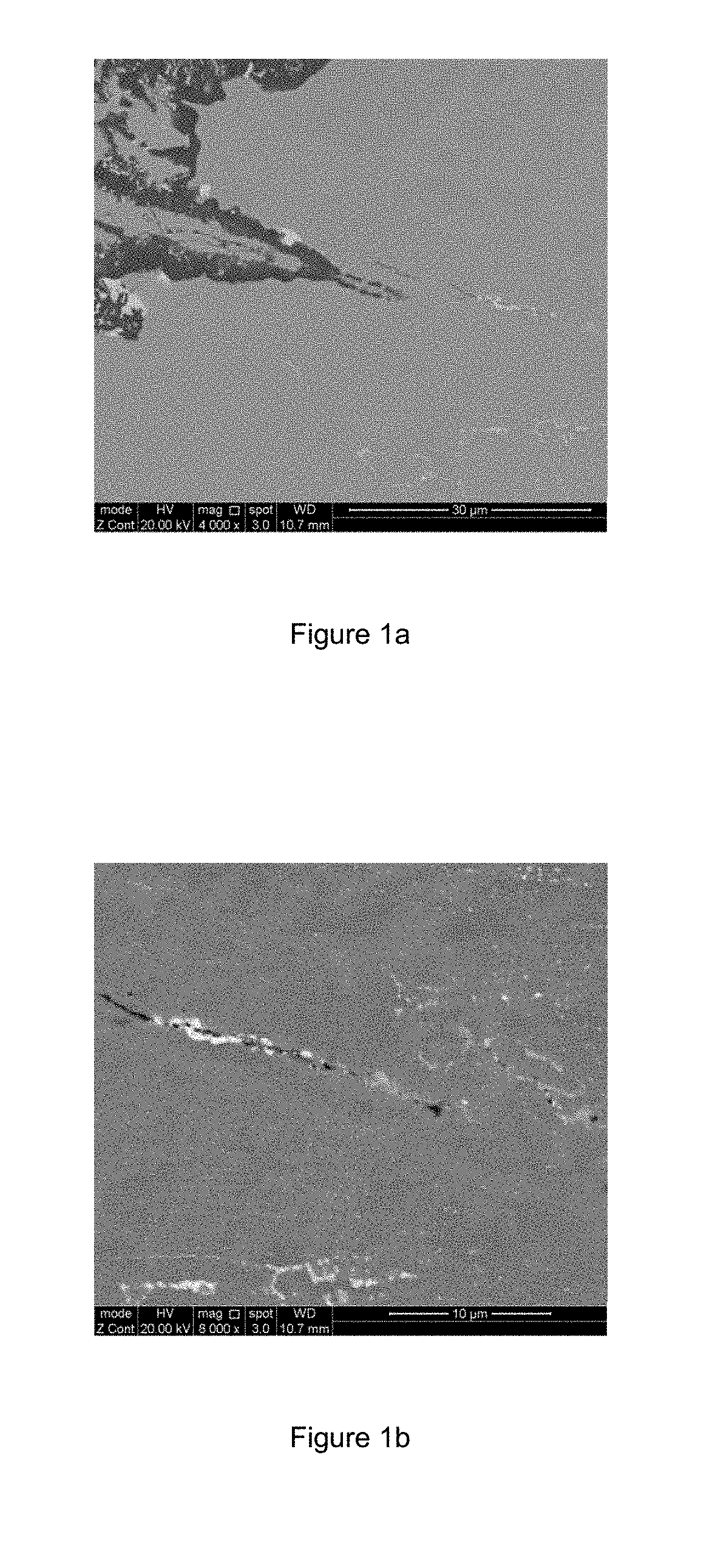Processing method
a technology of additive layer manufacturing and processing method, which is applied in the direction of additive manufacturing, turbines, mechanical equipment, etc., can solve the problems of prone cracking of components formed from superalloys, difficult welding of -strengthened superalloys, and difficult use of certain superalloys in alm methods, so as to reduce the extent of surface asperities, minimise the distortion of components, and reduce the effect of plastic deformation
- Summary
- Abstract
- Description
- Claims
- Application Information
AI Technical Summary
Benefits of technology
Problems solved by technology
Method used
Image
Examples
Embodiment Construction
[0077]A turbine or compressor component such as a blade or stator for use in a gas turbine aero-engine is manufactured using an ALM method in which a layer of powdered CM247LC having a particle size of between 15 and 60 microns is deposited on a base plate and fused into a 2D first fused layer using a scanning laser beam to melt and fuse the powdered CM247LC. Next a second layer of powdered CM247LC is deposited on the first fused layer and fused into a 2D second fused layer using the scanning laser beam, the second fused layer being fused to the first fused layer.
[0078]The deposition and fusing of powdered CM247LC is repeated until the desired 3D component is formed from the 2D layers.
[0079]The component is first processed using a surface finishing step which is applied to reduce the extent of surface asperities which arise as a result of semi-fused powdered CM247LC. If not reduced, the surface asperities act as initiation sites for stress-assisted oxidation during subsequent HIP of...
PUM
| Property | Measurement | Unit |
|---|---|---|
| pressure | aaaaa | aaaaa |
| pressure | aaaaa | aaaaa |
| angle | aaaaa | aaaaa |
Abstract
Description
Claims
Application Information
 Login to View More
Login to View More - R&D
- Intellectual Property
- Life Sciences
- Materials
- Tech Scout
- Unparalleled Data Quality
- Higher Quality Content
- 60% Fewer Hallucinations
Browse by: Latest US Patents, China's latest patents, Technical Efficacy Thesaurus, Application Domain, Technology Topic, Popular Technical Reports.
© 2025 PatSnap. All rights reserved.Legal|Privacy policy|Modern Slavery Act Transparency Statement|Sitemap|About US| Contact US: help@patsnap.com



